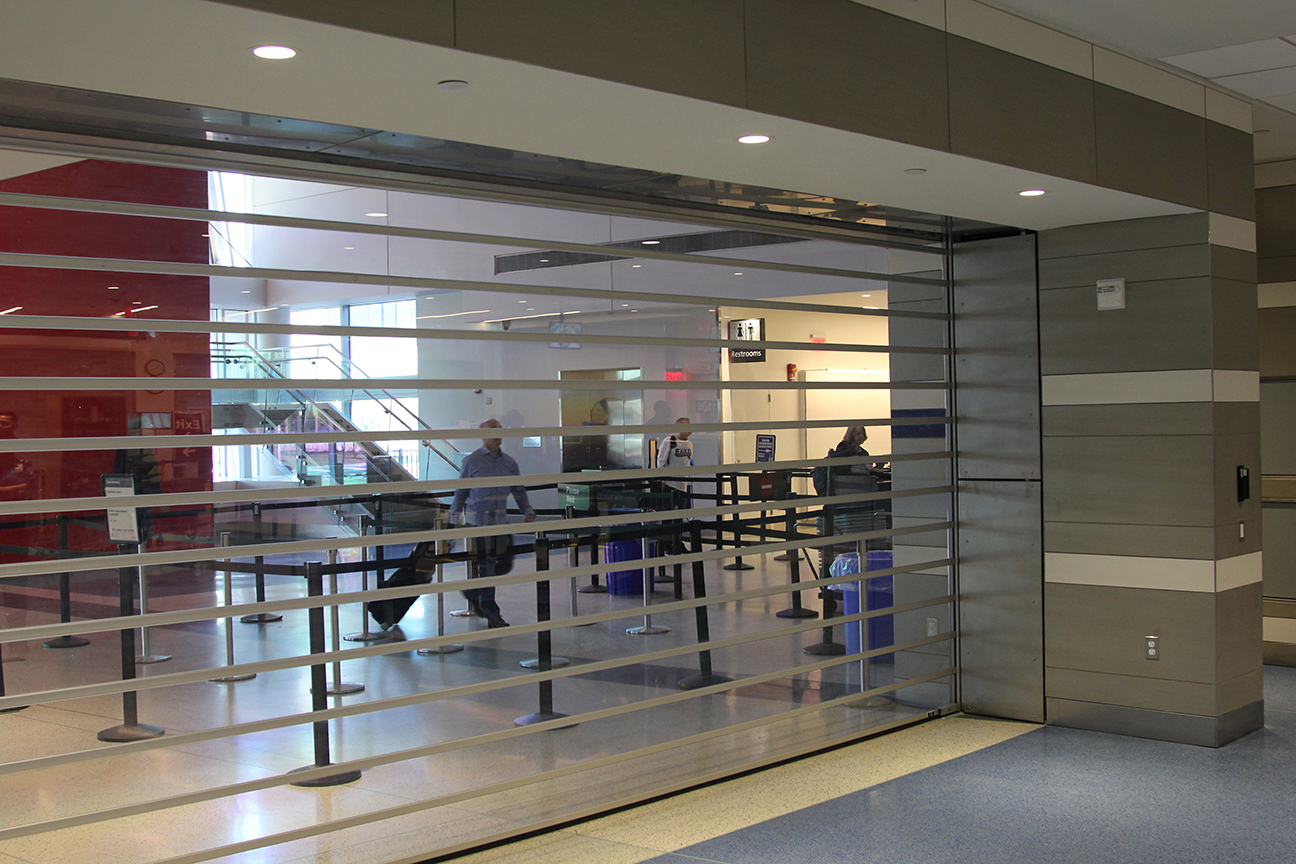Airports are some of the most complex environments in the world when it comes to security. Every day, thousands of travelers, employees, and vendors pass through terminals and concourses. This constant movement makes airports not only bustling hubs of activity but also uniquely vulnerable to security threats.
While aviation security often brings to mind passenger screening, baggage checks, and cybersecurity, physical security infrastructure inside the airport is just as critical. From protecting retail shops and concession stands to securing restricted zones and baggage areas, strong physical barriers deter theft, prevent unauthorized access, and ensure smooth operations.
One solution that has proven indispensable in airport settings is the use of custom security shutters specifically designed to meet the challenges of high-traffic, high-risk environments such as airports.
Airport security shutters provide effective solutions for businesses and facilities operating in these spaces, improving physical security to address the specific vulnerabilities within airport facilities.
Why Physical Security Matters in Airports
Airports represent a convergence of multiple security concerns:
- High traffic areas: Millions of passengers move through airports annually, making it easy for malicious actors or opportunistic thieves to blend in.
- Valuable goods: From duty-free luxury items to food and electronics, airports house high-value merchandise attractive to criminals.
- Operational sensitivity: Even small disruptions can delay flights, harm revenue, and negatively affect passenger experiences.
- Diverse stakeholders: Airlines, retailers, food service operators, logistics providers, and government agencies all share space, each with its own security requirements.
When physical barriers are inadequate, these challenges can lead to theft, property damage, and even potential breaches of secure zones. For this reason, airports must combine people-based security measures (guards, staff training) with robust physical security infrastructure.
Vulnerabilities Inside the Airport
While passenger checkpoints and perimeter fences receive a lot of attention, many other areas within airports require strong physical security. Some of the most vulnerable include:
1. Retail Shops and Duty-Free Stores
Airports are increasingly retail destinations, offering everything from luxury fashion to electronics. These shops often sit in open concourses, making them susceptible to theft during closed hours.
2. Food and Beverage Concessions
Restaurants, bars, and cafés operate long hours but still close at night. Without strong shutters, cash registers, alcohol, and supplies can become targets.
3. Baggage Handling and Storage Areas
Unauthorized access to baggage systems poses both security and safety risks. Physical barriers help prevent tampering or theft of luggage.
4. Restricted and Staff-Only Areas
Doors leading to maintenance rooms, IT hubs, or staff corridors are tempting entry points if not properly secured.
5. Emergency Exits and Corridors
While designed for safety, unsecured exits can be exploited if not protected by barriers when not in active use.
Each of these areas benefits from customized shutter systems that can be deployed quickly, withstand tampering, and maintain the visual aesthetics expected in modern airports.
The Role of Security Shutters in Improving Physical Security at Airports
Security shutters are more than just rolling doors. They’re engineered physical security solutions designed for flexibility, strength, and discretion. In airport environments, shutters can deliver several critical benefits:
1. Theft Prevention
By creating a strong physical barrier, shutters deter opportunistic theft and organized crime. Retailers in airports often deal with high-value goods, and shutters are an effective deterrent when shops are closed.
2. Controlled Access
Shutters help restrict access to areas such as baggage handling zones or staff corridors. Only authorized personnel can enter, reducing the risk of intrusion.
3. Safety and Compliance
In airports, any security solution must comply with fire and safety codes. Quality shutters are designed to provide security while allowing for emergency egress when necessary.
4. Aesthetic Integration
Airports place a premium on design and passenger experience. Modern shutters are sleek, low-profile, and customizable to blend with the architecture of retail storefronts and terminals.
5. Flexibility and Durability
With thousands of daily operations, shutters in airports must open and close smoothly, withstand heavy use, and resist tampering. High-quality materials and engineering ensure long service life in demanding environments.
Applications of Security Shutters in Airports
QMi Security Innovations specializes in airport security shutters that fit a wide variety of airport applications. Some of the most common include:
- Retail storefront shutters: Rolling or accordion shutters that secure duty-free shops, convenience stores, and specialty retailers after hours.
- Concession stand shutters: Compact shutters for kiosks, bars, and cafés that provide protection without taking up valuable floor space.
- Back-of-house security: Heavy-duty shutters or grilles for baggage rooms, inventory storage, and staff areas.
- Custom architectural solutions: Shutters designed to match the terminal’s aesthetic while still providing robust protection.
Each application requires careful planning to balance security, usability, and passenger experience.
Why Airports Choose QMi
Not all security shutters are created equal. We stand out by offering:
- High-quality engineering: Shutters built with durable materials designed to withstand tampering and heavy use.
- Customization: A wide range of designs, finishes, and mechanisms tailored to airport needs.
- Compliance expertise: Products designed to meet fire safety, accessibility, and building code requirements.
- Proven performance: Decades of experience securing high-traffic commercial and institutional environments.
By choosing the right security partner, airports and their vendors can ensure their spaces remain both safe and welcoming.
The Bigger Picture: Integrated Airport Security
While shutters are a powerful tool, they are part of a larger security ecosystem. Effective airport physical security combines:
- Surveillance systems (CCTV and AI-powered monitoring)
- Access control systems (badges, biometrics, keypads)
- Security personnel (guards and staff training)
- Physical barriers (shutters, gates, fencing)
Together, these layers create a multifaceted defense strategy that protects people, property, and operations. Shutters are often the most visible and immediate line of defense, stopping threats before they escalate.
Conclusion
As global air travel continues to grow, so too does the importance of modern airport security measures. While passenger screening and digital systems receive much of the attention, physical airport security is the foundation of safe, efficient airport operations.
Security shutters play a vital role in this ecosystem, protecting shops, concessions, baggage areas, and restricted spaces from theft and intrusion. With customizable, durable, and aesthetically integrated shutter solutions, QMi Security Innovations helps airports and their vendors maintain both security and passenger experience.
Contact our expert team today for more information about how QMi can help secure airport facilities from modern threats.

